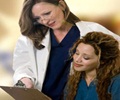
‘Rear-facing seat protects the child's head, neck and spine and prevents them from fatal accidents.’
Tweet it Now
"It's a question that parents ask me a lot, because they are concerned about the child facing the impact of the crash," said Julie Mansfield, lead author of the study and research engineer at Ohio State College of Medicine's Injury Biomechanics Research Center."It shows parents are really thinking about where these impacts are coming from."
Mansfield and her team conducted crash tests with multiple rear-facing car seats, investigating the effects of various features like the carry handle position and anti-rebound bars.
The study, which is published in SAE International, shows that when used correctly, all were effective because they absorbed crash forces while controlling the motion of the child, making rear-facing car seats a good choice in this scenario.
"Even though the child is facing the direction of the impact, it doesn't mean that a rear-facing car seat isn't going to do its job," said Mansfield. "It still has lots of different features and mechanisms to absorb that crash energy and protect the child."
Advertisement
"The rear-facing seat is able to support the child's head, neck and spine and keep those really vulnerable body regions well protected. These regions are especially vulnerable in the newborns and younger children whose spine and vertebrae haven't fused and fully developed yet," said Mansfield.
Advertisement
Source-Eurekalert











